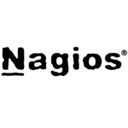Website Monitoring software: purchase guide
What is a website monitoring software ?
If you have a website or a web application then you want this one or it to be functional all the time. This is what ensures a website monitoring tool
Definition
A site monitoring tool is an IT solution that continuously monitors the operating status of a website or application. It makes it possible to detect if the site is functional or unavailable, notes the latencies and the possible bugs or the level of saturation of the infrastructure (server, RAM, disk space) which could lead to the temporary or permanent unavailability of the service.
How it works
The monitoring tool is a relatively lightweight software that gives you read access to your website. It will indeed be able to check on a regular basis (every hour for example) the site, the pages, the actions, the visitors. If the software detects a problem (defined according to default and custom settings) then it will alert the administrator
What are the features of a wesite monitoring tool ?
Active Monitoring (Active Monitoring)
The active monitoring solutions will interrogate the site permanently. For example, they ask for a particular page and the answer they provide (the status code or server code) makes it possible to say whether everything is compliant or not. In this case the software will pretend to be a web browser and simulate normal behavior of a visitor. If your site has hundreds of thousands of pages, you can direct it to page types (category, home page, contact page) to avoid overloading the tool.
Real User Monitoring (RUM): Monitoring Site Visitors
These site monitoring solutions will monitor the behavior of actual users on the site instead of monitoring the website itself. The tool will be able to say: what pages do users visit, how fast do they load, do they fill out a form, do they manage to navigate properly, do they disable JavaScript, etc.
Server Monitoring: Network or server monitoring
The monitoring of the server consists of monitoring the infrastructure that operates the website. The server monitoring will allow to know in real time the level of use of the CPU (processor), RAM, storage on the disk, incoming and outgoing traffic. All of this data is very technical compared to previous ones
Application Monitoring: Application Monitoring
If your website is connected to other web services via Web Services or various connectors, then the proper functioning of your site is intrinsically linked to the good functioning of others. Application monitoring will make it possible to request external services and to know if they are working well. If it is not the case then your site will know problems: lack of data, crash, impossibility of carrying out actions, etc.
Transaction Monitoring: Functional Monitoring
Transaction Monitoring is similar to active monitoring, but instead of testing the proper functioning of a page, it will test a specific feature such as the site login form. It is also possible to set up matching rules that validate that the functioning of a page is correct, when it displays a specific term.
Who uses website monitoring solutions?
Any company with a showcase site (Wordpress, Joomla), an e-commerce site (Magento, Prestashop) or a web application (SaaS software, marketplaces) must have a monitoring tool more or less powerful to guarantee a minimum availability rate of its site. Many companies go through IT outsourcing companies that put network monitoring tools themselves, but not all of them provide real-time access to the data. This is why IT supervision must often be internalized as is the case with a site monitoring software.
The users of website monitoring tools are as much the administrators in charge of the technical functioning of a site (network administrator, Dev Ops) as the webmarketing managers and other product managers in charge of the functional performances:
- Technical staff: high availability of the service, bandwidth saturation, HTML optimization, disk space, backup, firewall, network infrastructure, performance testing, cybersecurity
- Marketing staff: SEO, UX site, SEO, page loading time, bounce rate, conversion rate, indexing rate, mesh
Why using a network monitoring software?
Advantages
- Allows immediate detection of malfunctions on his site
- Maximizes site performance for natural referencing and user experience
- Uses secure protocols and does not overload the site
- Reassign indicators in real time
- Adjustable ping frequency
- Helps prevent network security vulnerabilities
- There are many open source software in this category
- Automation of functional tests
disadvantages
- The price can sometimes be relatively important
- Not all solutions can integrate all business processes



















